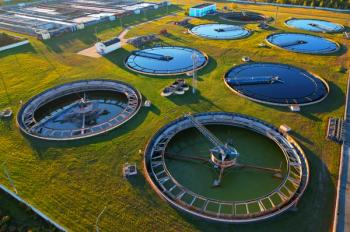
GCMS of Environmental Analysis
This Monday morning session will be presided over by Archana Kumar of Genentech (San Francisco, California).
Session 390 Room B401, 8:30 a.m. This Monday morning session will be presided over by Archana Kumar of Genentech (San Francisco, California). The session will begin with a presentation by Franck Amiet of Chromatotec Inc. (Saint-Antoine, France) titled “Continuous Monitoring of Polycyclic Aromatic Hydrocarbons Using Automatic Thermal Desorption-Gas Chromatography.” Amiet’s presentation will focus on the implementation of a new and simple method for sampling and determination of PAHs in gas and solid-phase in air by using a thermal desorption technique followed by gas chromatography equipped with two detectors: a flame ionization detector and a mass spectrometer. Following Amiet, Hongxia Guan of Georgia Gwinett College (Lawrenceville, Georgia) will present “Method Development for Evaluation of Pesticides Residue in Lake Lanier Georgia Gwinnett County’s Drinking Water Resource Using Disposable Pipette Extraction (DPX) and Gas Chromatography−Mass Spectrometry (GC−MS).” Hongxia will discuss a DPX method that used a reversed-phase mechanism that was found to be a rapid and reliable SPE method for pesticides extraction from water. Lee Marotta of PerkinElmer will speak next on the topic “Overcoming Cost and Supply: Let’s Use Nitrogen.” This presentation will review all method parameters used with three carrier gases and the results using nitrogen and hydrogen as alternate carrier gases compared to results attained with the referee carrier gas helium. Maura K. McGonigal of Penn State University (State College, Pennsylvania) will speak next on “Analytical Method Development for 2, 4, 6, 8-Tetrachlorodibenzothiohiophene (TCDT) in River Sediments Utilizing GCxGC-TOFMS and APGC-TQS.” McGonigal will discuss using GCxGC-TOFMS analysis on river sediment samples and the use of isotope dilution to obtain an initial quantification of the samples. The sediment extracts were also analyzed with an APGC-TQS. After a short recess, Paulina Piotrowski of Penn State University (State College, Pennsylvania) will give a talk titled “A Kendrick Mass Defect Approach Towards the Characterization of Hydraulic Fracturing Fluids.” This presentation will discuss an environmental forensics approach towards the separation using GCxGC coupled to a high-resolution time-of-flight mass spectrometer. Anil Srinivas Chaitanya Vishnuvajjhala of Duquesne University (Pittsburgh, Pennsylvania) will present “Collaboration of Government (EPA), Industry, Academia to Update EPA Method 625 to Solid Phase Extraction for Drinking and Wastewater Analysis Combining Stir-Bar Sorptive Extraction and EPA Method 6800.” Data from the collaborative study and method validation will be discussed. The next speaker will be Paolo Benedetti of the Institute for Atmospheric Pollution Research – IIA – CNR, who will present “Analysis of Vapor Mercury in Ambient Air and Flue Gas Emissions Using Thermal Desorption Trap Hyphenated with Gas Chromatography/Mass Spectrometry.” The presentation will include a discussion about the development of a simple TD-GC-MS method for monitoring and characterizing mercury compounds in the atmosphere using a sampling device based on an innovative sorbent material. The final presentation will be given by Lee Marotta of PerkinElmer (Waltham, Massachusetts) titled “Soil Gas: Are Targets Being Missed?” The goal of this research was to determine if compounds above the boiling point of naphthalene were present in soil gas and being missed using Environmental Protection Agency (EPA) method TO-15, which is a canister-based sampling technique that has poor to no recovery of compounds above the boiling point of naphthalene.
Newsletter
Join the global community of analytical scientists who trust LCGC for insights on the latest techniques, trends, and expert solutions in chromatography.





